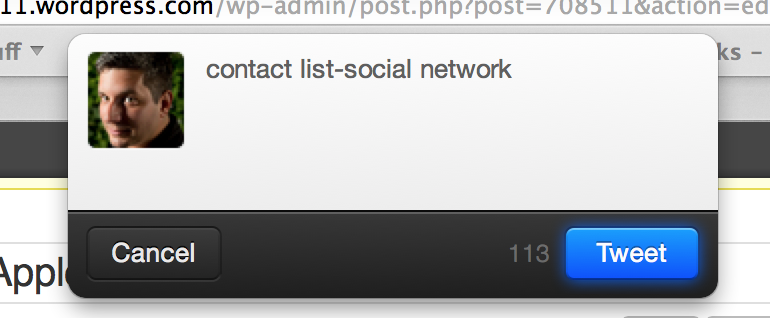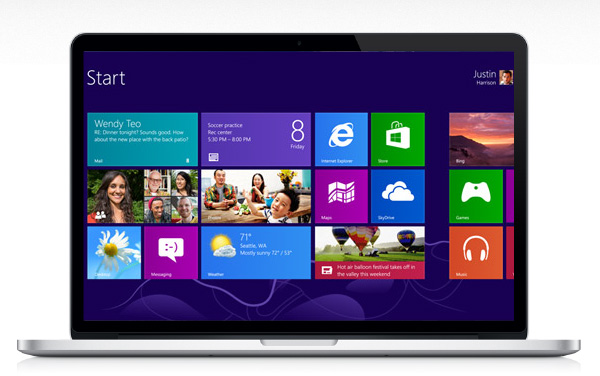I’ve been using Windows 8 off and on for the past few weeks and, while I agree with many of the sentiments expressed by folks like Chris Pirillo and our own MG Siegler, especially regarding the Surface RT, I still think Microsoft did a good (not excellent) job on Win8.
In the immortal words of losing Little League coaches everywhere, at least they tried and there’s always next season. Windows 8 won’t be universally hated, say, when it pops up on a few hundred thousand new laptops come the holidays and kids and parents start mousing around the new interface. In fact, given its unique nature, I think even Apple could learn a thing or two from Microsoft in this case. That said, we scrounged around for five things Apple could do to learn from Microsoft.

Try a little touch – I was writing on my Mac the other day and suddenly an autocorrect box popped up and stayed up a little to long. The suggested words appeared and the little X to close the window. My finger instinctively rose to tap it closed and, much to my chagrin, nothing happened.
Apple has ingrained the idea of touch as a viable interface yet refuses to add it to its own line of laptops and desktops. Arguably OS X is definitely not ready for a touch interface with its tiny buttons and menus, but fullscreen mode and Launchpad ostensibly point to a potential iOS-like interface. I think the desktop/window user experience is going to be difficult to tear away from the laptop or PC experience, but as Apple proved with iOS, users are more than happy to try a new paradigm. Microsoft tried constantly to make tablets work by throwing a stock Windows experience onto a slate. Now they have a chance.
Hide the file system – While arguably Windows 8 doesn’t exactly hide the file system from prying eyes, in the Metro interface you are reminded that it exists far less than usual. While dumping into the desktop interface offers a jarring reminder that all your files are still there, the default Win 8 concept is of a machine that holds files with little input or mussing about by the user. This, in a way, is a good thing.
While we nerds love deep, branching file systems, the average user is mystified by them. Where do files go? Why did they end up in Documents and not Downloads? Instead of making a home directory, why not make a home space. Everything can pop up in there and a quick search reveals the files. Granted, Apple has done some of this in iCloud, but it’s not quite there yet.

Better system-wide social – Granted neither company has quite implemented social quite that well just yet, but Microsoft’s live tiles with flipping and flopping feed images and the interaction between social networks and contact lists is doing an interesting job of it. Simply Tweeting from the Services menu isn’t exactly what many of us had in mind when we thought of true social interaction.
Smarter icons – If there’s anything I like about Win 8 and Windows Phone, it’s the concept of live tiles or, more precisely, live icons. OS X and iOS badges work and something can be said for the zen-like stasis of most previous-gen icons, but more information at a glance is becoming increasingly more important. Although we could argue about the potential distractions associated with messy live tiles all over the screen, I still think it’s a sight better than that incessant bouncing or the tiny numbered badge that offers little in the way of informative content.
Shake things up – Here’s the thing: at least Microsoft knows that the desktop model is stagnant. Touchscreens are a proven method for device interaction and they have tried, and failed, to bring Windows to slates. They know what works and what doesn’t. Love them or hate them, Microsoft has a dog in the fight for the future OS design. Now everyone else will have to play catch-up.
